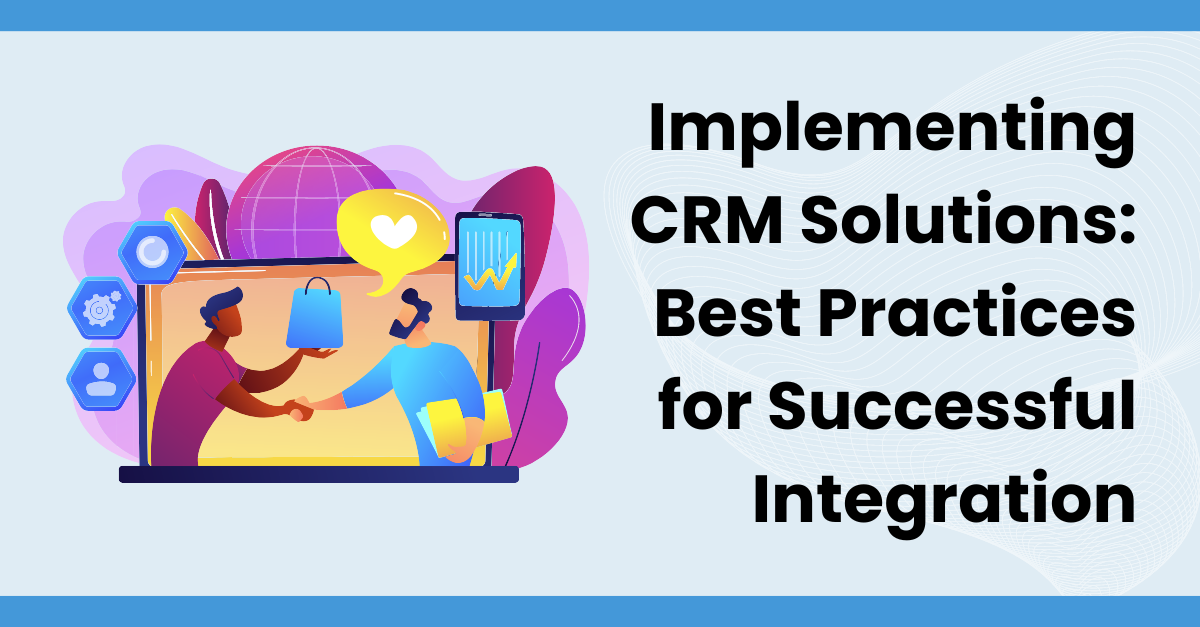If you’re reading this, you probably already know how important customer relationship management (CRM) is for your business. You want to understand, engage, and retain your customers, right? Well, you’re not alone. CRM tools are nestled in one of the fastest growing niches in digital marketing; personalized, customer-centric marketing.
But here’s the thing: CRM alone is not enough. Integrating your CRM with other systems and processes that support your customer journey is key to your success. Why? Because that way, you get a holistic, birds eye view of your customer, and can deliver personalized content across all metrics and channels. Your CRM is like your International Space Station, allowing you to zoom in on your customers' needs, wants, and behaviors.
But how do you do that? How do you ensure a seamless CRM integration and implementation? Don’t worry, we have you covered. Let’s discuss a few best practices that will help you integrate your CRM like a pro.
Define your business objectives
Before you think about integrating your CRM with other systems, you need to have a clear vision of what you want and the metrics you need in order to achieve it. What are the main challenges or obstacles you want to overcome with CRM integration? What are the specific benefits and outcomes you’d like to see for your business and your customers? What are some key performance indicators (KPIs) that you will use to track your progress and success?
Defining your business objectives will help you prioritize your integration needs and avoid unnecessary costs and complexity. You don’t want to waste your time and money on something that doesn’t add value to your business or your customers.
Choose the right type of integration
Within CRM methodology, there are different types of integrations. Take Salesforce for example - one of the most powerful and flexible CRM platforms. There are a few types of integrations in Salesforce that you can use to connect your CRM with other systems depending on your needs. Some of the most common ones are:
- Point-to-point integration - The simplest and most direct way of integrating two systems. This form of integration means the two systems exchange their data through APIs or web services. It’s suitable for simple and low-volume integrations, but as the scale of the operation increases, so too does the difficulty to manage this type of integration.
- Middleware integration - A more flexible and advanced way to integrate multiple systems. Here, a third-party software acts as a broker between the systems, allowing you to create, manage, and monitor complex integrations. The delegate to a third-party means you can handle high volumes of data and transform it with ease. A few examples of these tools are MuleSoft, Dell Boomi, and Jitterbit.
- GPT integration - A cutting-edge and innovative way of integrating systems. Generative pre-trained transformers (GPT) are deep learning models that can general code and language based on large amounts of data. This method allows you to create a dynamic system of integrations, as well as leverage the power of AI and language processing. GPT and AI are elements of Salesforce’s digital process automation tool aptly named Einstein.
You should evaluate the pros and cons of each integration method and choose the one that best suits your budget, timeline, and technical capabilities. You might be surprised by what you can achieve with the right integration method and tool.
Secure your data and its quality
Data is the lifeblood of CRM integration. You need to ensure that it’s accurate, complete, consistent, and secure. If any step along the way is compromised, your insights could be ruined. Review your data sources to make sure you remove inconsistencies and duplicates. Identify data fields that you want to integrate and their relations to one another. A simple checklist for data best practices is: cleanse, standardize, map, transform, and protect your data.
Test and monitor
Once your integration is implemented, you need to make sure it’s working as intended. To do that, you need to monitor it by performing a series of tests. These include: unit testing, integration testing, user acceptance testing, and performance testing. A whole lot of testing. But the point of all that is to ensure the functionality and reliability of your integration. This is not a one-time activity. As your business grows, you will encounter processes that require your attention and care. You want to make sure you come out ahead of them rather than behind.
By following these strategies, you can ensure a seamless CRM integration, allowing you access to some of the most powerful tools available to your business today. If you want to learn more about CRM integration with your business, contact us and get started today.





Leave a Comment